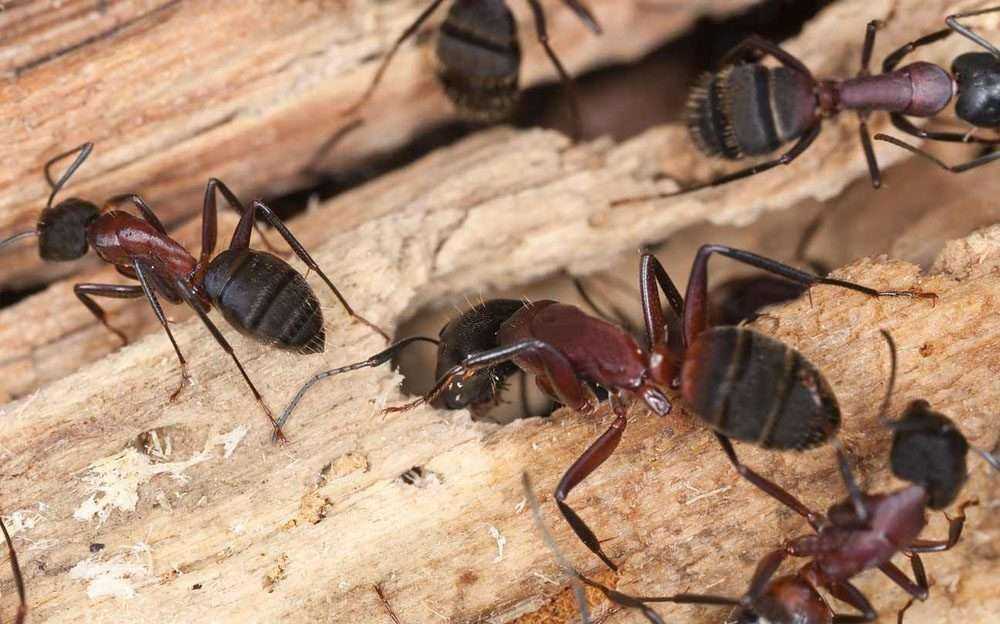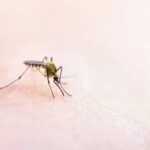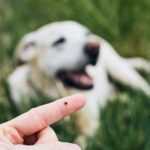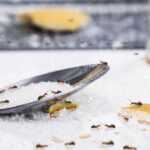Carpenter ants are known for the damage they can inflict on wooden structure. Like termites, carpenter ants can destroy a house from the inside out. But unlike termites, carpenter ants don’t actually ingest the wood they are removing from a structure! So what attracts carpenter ants, if it’s not food?
Carpenter ants seek wood as shelter. They will nest in anything that is made of dead wood, including old tree trunks or living trees with patches of decay. The decay is key: Carpenter ants almost always start with damp or dead wood, working their way inward from there.
Carpenter ants will also nest in certain man-made materials, including the foam insulation boards that are sometimes used in crawlspaces and attics.
Warnings Signs of a Carpenter Ant Infestation
Carpenter ants can be tricky to spot, but there are some tell-tale signs:
- Sawdust piles beneath wooden structures.
- Small holes in wooden structures, known as “kickout” holes, where carpenter ants have kicked out sawdust produced by their tunneling.
- Discarded wings.
- A rustling behind walls.
- Flying carpenter ants inside the house.
- More than ten carpenter ants seen inside your home at one time.
If you see any of these signs, look for the other indications that carpenter ants are tunneling through your home. The faster you find the issue, the faster you can eliminate the problem and minimize damage.
Preventing Carpenter Ants
The best way to avoid having a carpenter ant problem is simple: prevention! We recommend a variety of prevention techniques, but here are the basic considerations:
Inspection:
- This is the first step in any prevention plan.
- By having your home regularly inspected, the potential beginning of a carpenter ant infestation can be stopped before it spirals.
- Inspect your home for the presence of ants, but also inspect the exterior for any situations that could encourage carpenter ants, like damp or decaying wood.
Mulch:
- Keep mulch away from the house.
- Lay mulch less than 3 inches thick.
- Choose a mulch with large chunks, not fine particles that could trap moisture or conceal ant activity.
- Choose inorganic mulch (rocks, shells, etc.) if possible.
- While carpenter ants won’t typically choose to live in mulch, it can conceal activity or hide a temporary nest.
Water:
- Limit or eliminate water collecting plants.
- Remove all standing water sources.
- Be strategic with shade, so your landscape can dry out and not collect water.
- Make sure your home doesn’t have any leaks, either within the roof, the walls, or within the plumbing system.
Exclusion:
- Your home should be properly sealed against the elements–and against pests.
- Make sure any foundation cracks are sealed. Make sure caulking around doors, windows, and siding is intact, and that your doors and windows have weather stripping properly installed as well.
How to Get Rid of Carpenter Ants Professionally
If you’ve taken steps to prevent carpenter ants and you still have them in your home, contact PURCOR. We use Integrated Pest Management (IPM) to get rid of your pest issues, using our knowledge of their habits and behavior to eliminate them completely. You don’t need to battle carpenter ants alone–give us a call today!
"*" indicates required fields
"*" indicates required fields




